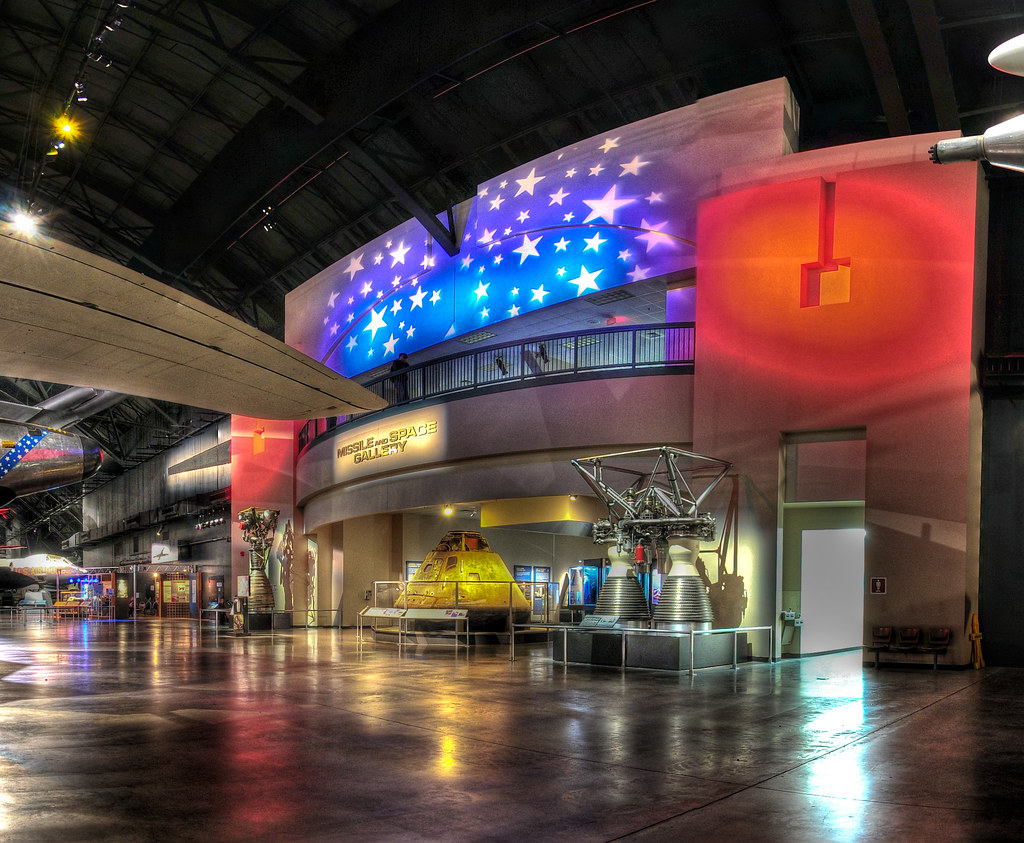
Entrance to the Missile and Space Gallery with Rocketdyne LR79 engine, Apollo 15 Command Module, and Aerojet-General LR87 Liquid Rocket engine. From the balcony of the Mezzanine Level one has a great view across the whole Cold War Gallery. The person standing there while I took the picture is my colleague Gary.
Apollo 15 was the fourth mission to land astronauts on the moon and the only Apollo mission with an all-Air Force crew. Col. David R. Scott, Lt. Col. James B. Irwin and Maj. Alfred M. Worden flew the command module on display, named Endeavor, to the moon in 1971. The craft is named after the ship that carried Capt. James Cook on his famous 18th century scientific voyage. After launch on July 26, 1971, the crew spent four days traveling to the moon. On July 30, Scott and Irwin landed the lunar module Falcon on the moon, and spent about 67 hours on the lunar surface. Worden remained aboard Endeavor in lunar orbit conducting experiments and taking photographs. The crew returned to Earth on Aug. 7, 1971, splashing down in the Pacific Ocean near Hawaii. The successful mission lasted just over 12 days.

No comments:
Post a Comment